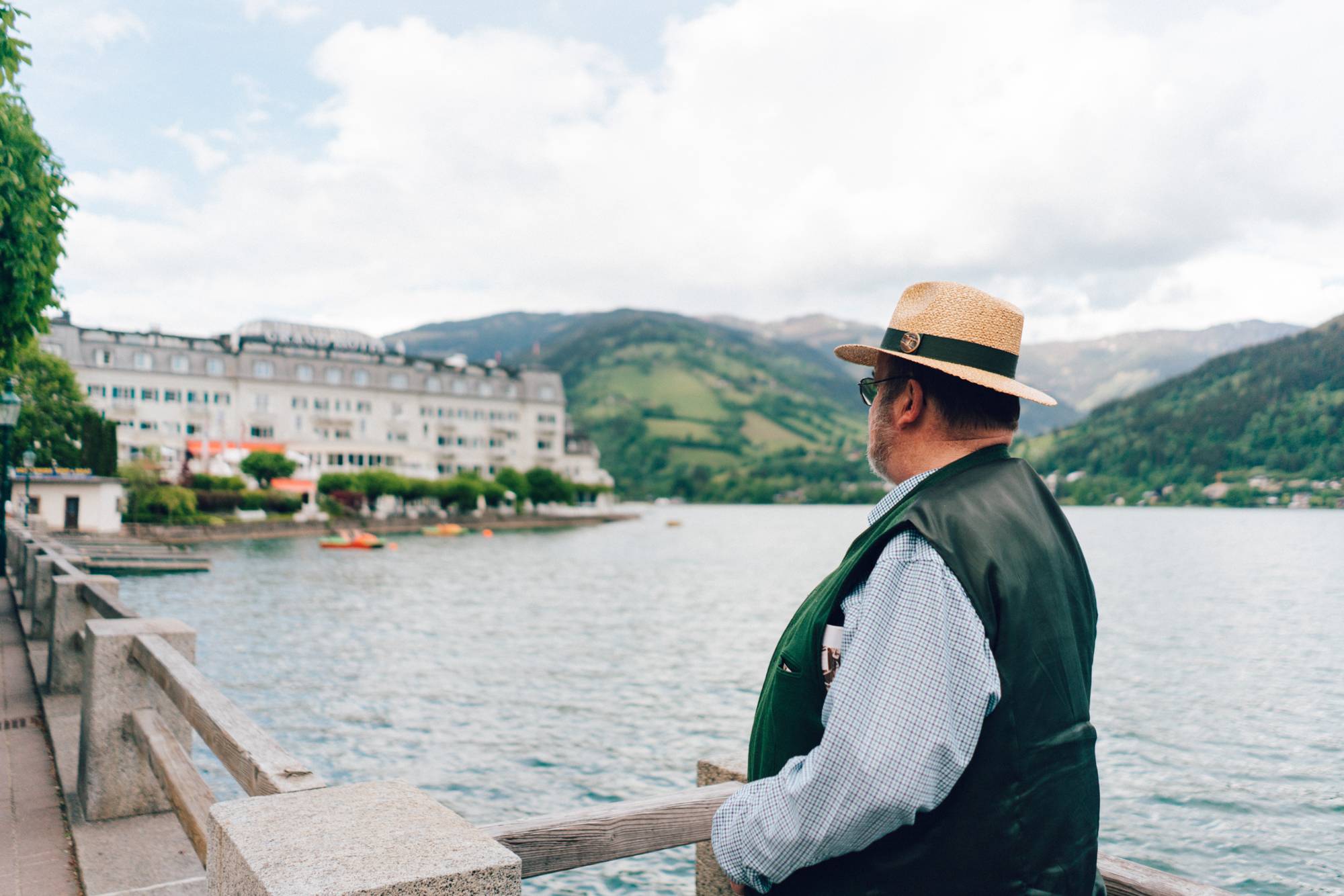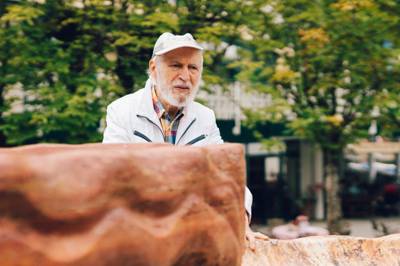The Grand Hotel Zell am See
City Guide Fred Bacher about the Grand Hotel
At one of the most beautiful places around the lake, a piece of Zell's history was made.
Already in 1878, the Zeller family Flögl opened the hotel on the lake on the small peninsula, which, however, had to declare bankruptcy a year later. In 1887, the family Böhm took over the house and renovated it step by step.

In 1896, it was re-opened in its today's appearance as the 'Grand Hotel at the Lake' and brought VIP guests from all over to Zell am See, a popular summer retreat in the years before World War I. However, the war forced Carl Böhm to sell his life work in 1918.
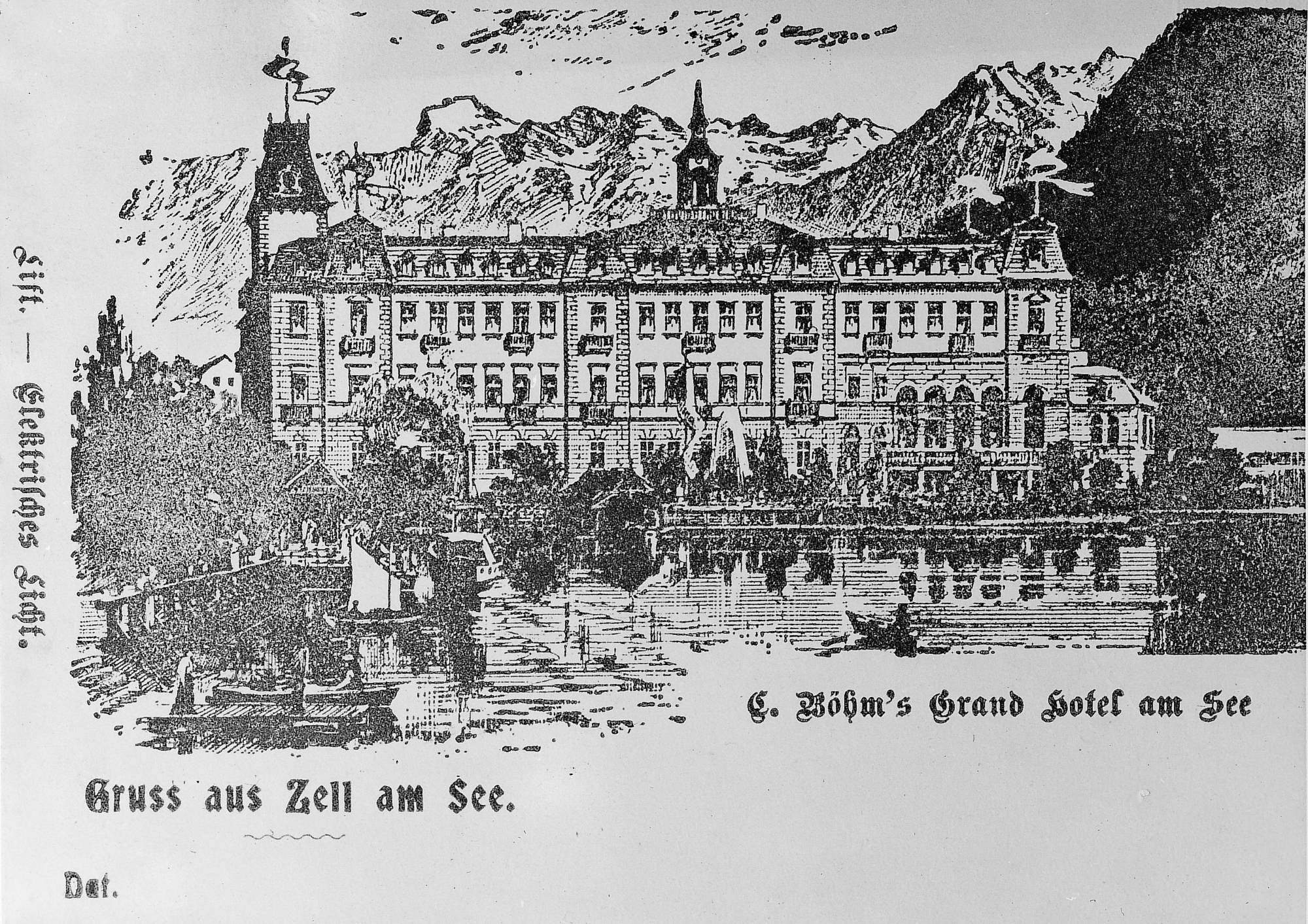
Wars and occupation time
Years full of hope followed under Carl Pischkittel who led the hotel with quite some success despite the economic crisis and the turbulent years between the wars. Eventually, however, Hitler's Thousand Mark Ban hit the tourism in Zell am See hard and also Pischkittel had to throw in the towel.

During the Second World War, the hotel served as a holiday resort for German soldiers and after the end of the war it was overtaken by the American occupation forces. For a short period of time, Zell am See even became a university town because the Americans offered the GIs to pick up a study program at the 'Rainbow University' during the occupation time. The Rainbow University was an educational institution hosted in several buildings in Zell am See, named after the 'Rainbow Division' under commander general major Harry J. Collins. The headquarters were the Grand Hotel and the Hotel Zauner next-door.
Golden years and the ravages of time
After the end of the occupation in 1955, a former Tyrolean skiing instructor bought the hotel for the token sum of one shilling: Franz Gramshammer, who was also the owner of the Berghotel Schmittenhöhe and the Hochzeller Alm, revitalized the hotel and lead it through the booming years of the 1970s.
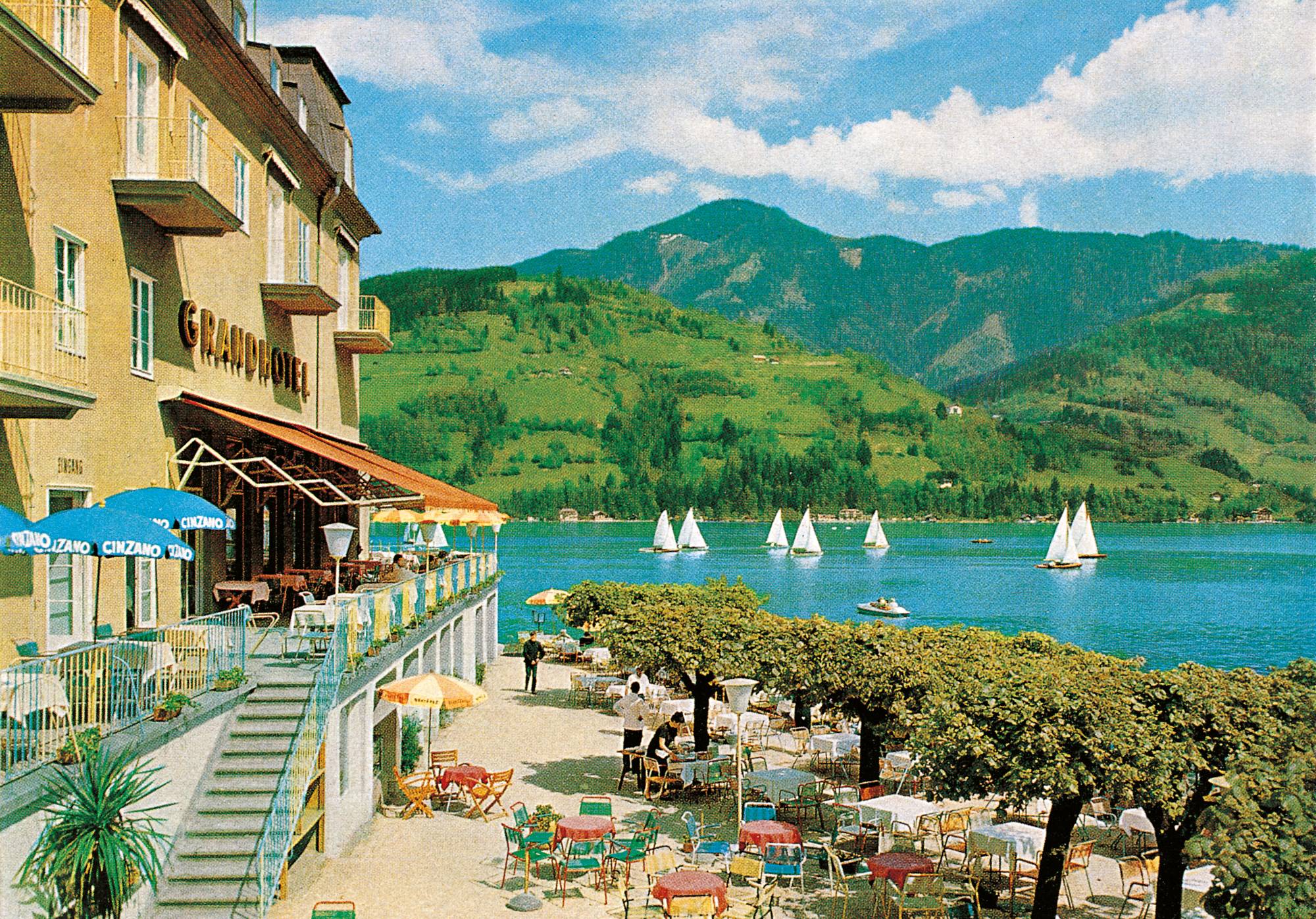
The Grand Hotel served as a venue for several film productions and its previous splendor as a hotel of the Rich and Beautiful was restored. However, the ravages of the time had taken their toll on the hotel and a flood in 1965 caused harsh damage. In 1980, the hotel had to be sold to a Swedish time sharing society. During a generous renovation, the hotel was rebuilt from the ground while preserving the old facade and re-opened in 1984.

Imperial resumption
However, the time sharing model did not prove sustainable and in 1995, the hotel was again for sale. Dr. Wilfried Holleis from a renowned local family of hoteliers bought the Grand Hotel that comprised also the adjoining building 'Clima' (former 'Hotel Zauner'). Today, the Grand Hotel is a modern wellness hotel with imperial flair and since 2015 it also accommodates the casino Zell am See, maybe the most appealing casino of Austria because the place where the Grand Hotel was built over 120 years ago is still the most beautiful place at the lake!
Fred Bacher
The longtime tourist guide knows Zell am See like the back of his hand. At an early age, he spent some time in Sweden, learned the language and became, hence, the first point of contact for the numerous Swedish tourists that visited the region in the 1960s and 1970s. He even served as the personal attendant to skiing legend Ingemar Stenmark during his visit in Zell am See. He supported the other Swedish guests in many ways. He did not only provide them with interesting information about the region but also supported the local police in explaining the legal provisions for the protection of young people to visitors of night clubs and bars in their native language.
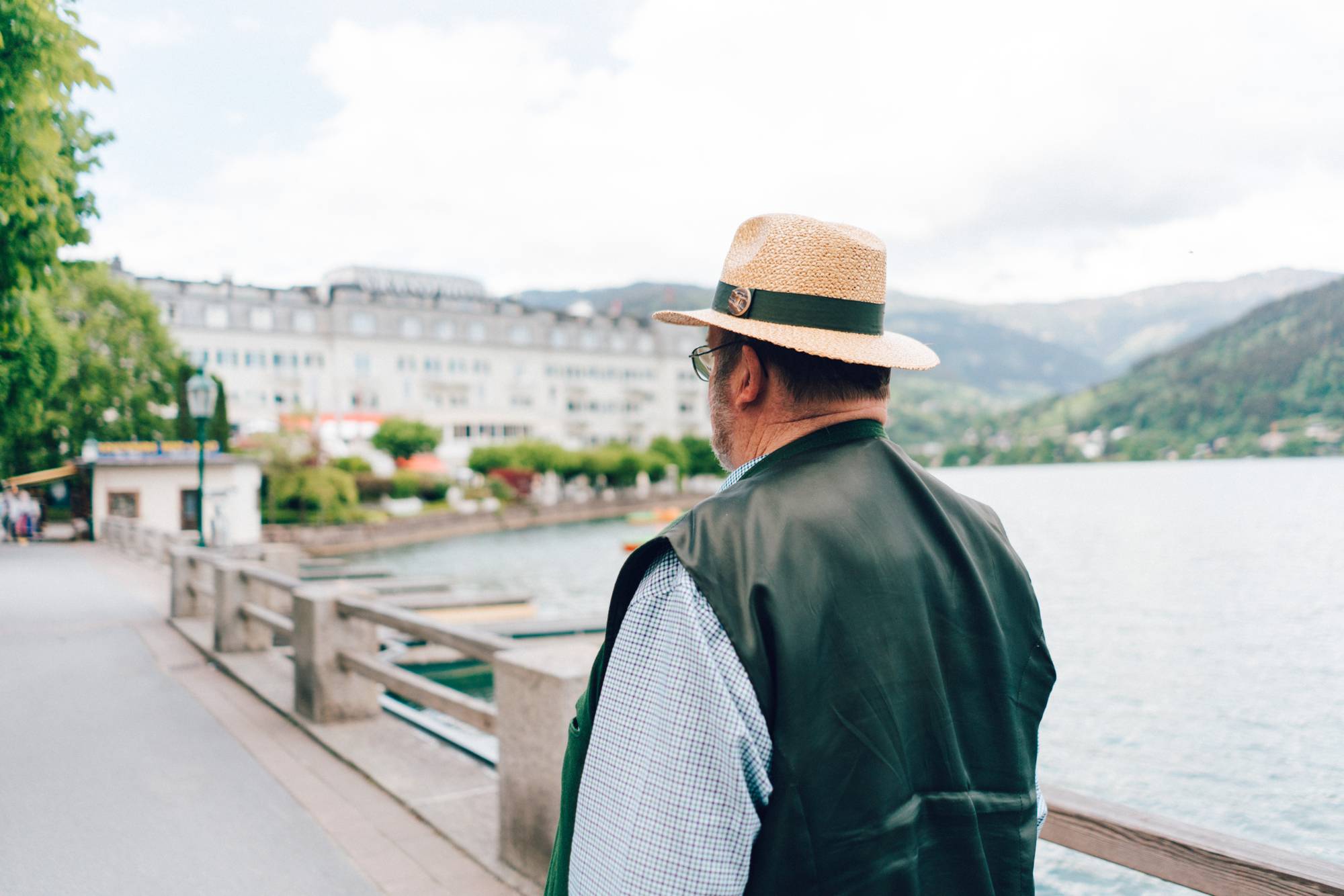
For Fred Bacher, the Grand Hotel has become a symbol for the golden era of tourism. The legendary five-o'clock-tea with live music where guests appeared in elegant clothes, the VIP guests from all over the world who often arrived by train, the hotel as an employer for many locals that spent their summer months working as a lift boy or a porter… Fred Bacher becomes a bit melancholic when he remembers those days. He also recognizes the high level of quality. Whether it is in culinary, wellness or the casino, a lot has changed for the better. Fred Bacher is especially delighted that the Grand Hotel still looks like in the days of the 'Belle Époque'. Not only because it reminds him of his childhood when American soldiers offered him chewing gum or chocolate, he simply cannot imagine the townscape of Zell am See without the Grand Hotel!
